- Home
- Richard Adams
The Day Gone By Page 40
The Day Gone By Read online
Page 40
During the first run, we had all perceived along one length of the very dark road a vile smell - the smell of corruption. As we were coming back from the petrol dump for the second time, the rain gradually stopped and light came into the sky. We were now able to see what it was that was nauseating us. The adjacent fields were full of dead horses; cart-horses, most of them. Our Typhoons had destroyed all the Germans’ motorized transport, and in their retreat they had commandeered horses and carts for their gear. But the Typhoons had got them, too. They looked so pathetic and pitiable, those great, innocent beasts, their legs sticking stiffly up at all unnatural angles and foul white bubbles blown from every orifice of their bodies.
We were just getting over this when suddenly Driver Farley said (just like a policeman) ‘’Ullo, ’ullo, what’s this?’ He had seen quicker than I. Three figures in uniform were approaching us down the slope of a field. They were Germans, evidently bent on surrender. We pulled up and I gestured to them to come up to me.
One was Luftwaffe. He looked like a veteran and turned out to be one, for I found in his pocket an iron cross (made of plastic) which bore the date ‘1939’. He also had a picquet pack which I’ve still got. The second was an infantry officer in jackboots, a mere child who looked about seventeen. The third was a Kaporal, black-haired and dour. I motioned them into the jeep and, when we came to the next small town, handed them over to the Maquis, in accordance with standing orders. That was the last we saw of them.
When we finally got back, the company had already up and gone. John had left someone behind to tell us where. The going was easier that day, even though we were all so sleepless; there seemed to be less on the roads. We caught up and that morning were among the first Allied troops to enter Brussels.
Guards Armoured Division, the spearhead of the Allied pursuit, reached Brussels on 3 September. Hard on their heels followed the ‘seaborne tail’ of 1st Airborne Division, ready to go forward as soon as the airborne attack on Holland should begin.
I have been told that the liberation of Paris had nothing on the liberation of Brussels, and I can believe it. Every street was thronged with people, laughing, weeping, cheering, climbing on our jeeps and lorries, covering us with flowers and paper-chains, pinning red-black-and-yellow emblems and boutonnières on our airborne smocks; girls by the hundred kissing us, men pressing upon us glasses of everything you can imagine. (‘M’sieu, voilà, le vrai Scotch whisky! Pour ce jour je l’ai caché quatre ans! Vive l’Angleterre!’) Everywhere the bells were ringing, bands playing. It was unreal — dream-like. I found, somehow or other, in my jeep, a pretty Belgian girl of about my own age - twenty-four. Her name was Janine Flamand, the daughter of (I think, having visited her home) a rather wealthy wine merchant. As we rode on, something amusing occurred which showed up my rotten French. The jeep was moving jerkily, as best it could, through the clamouring benediction, when Janine suddenly cried ‘Oh, j’ai perdue l’équilibre!’ In all the hubbub I heard it phonetically as ‘lait qui libre’, and wondered what on earth free milk could have to do with all this. I knew they were all ‘libre’ now, but the ‘lait’? An idiom? Anyway, Janine got liberated good and proper. During the next ten days - and later - I had quite a lot to do with the Flamand family and liked them very much.
John Gifford, while certainly no killjoy, sat a bit loose to all this wild melarky. It was not only that he had the Company to be thinking of. It was, rather, that this kind of rapturous frolicking and emotional carousal with strangers wasn’t compatible with his naturally impassive, self-possessed temperament. I have a memory of our being together one evening in some sort of club or dance-hall, with a band. We were continually being importuned to dance, of course, and John obliged with the best of them; but after a while the band struck up a conga. The conga of those days was an affair simple to the point of childishness. Everyone formed a line; you held the girl in front of you round the waist and the girl behind you held you round the waist. There might be a hundred or so people thus engaged. Then the chain cavorted rather ponderously round the room, flinging out right and left legs alternately as they went. I recall watching John’s back, four places ahead of me. It looked what you’d call unco-operative and long-suffering. Later that night, when we were out of the city and snugly back in our village near Louvain, he pointed to the brightly coloured wooden Belgian emblem pinned on my shoulder and said quietly ‘I think we’ll take these things off, shall we? We’ve liberated Belgium now.’
We were comfortable enough in that village, hearing and discounting military rumours; getting the vehicles - and ourselves - to rights after the rigours of the advance from Normandy; the blokes going into Brussels in relays for rest and recreation - rather more of the latter - and at last receiving letters from home. I found I could generally communicate what I wanted to in French, but understanding it was more difficult, because the locals spoke so idiomatically and quickly. The officers’ billets were in a friendly farmhouse. I remember that one early afternoon it began to rain heavily. After a minute or two Yvette, the grown-up daughter of the house, came running in with her hands and shoes dirty from the garden and poured out to me a torrent of urgent French. ‘Lentement, mademoiselle, je vous en prie: plus lentement!’ Yvette, hopping from foot to foot and drawing in her breath with hard-won self-control and patience, said ‘Les fenêtres’ — (nod) — ‘de votre chambre’ - (nod) - ‘sont ouvertes’ - (nod) - ‘et la pluie -’ The franc dropped, and I was half-way up the stairs.
Phil Bushby, our Workshops officer, was a much better linguist, and in the evenings used to read the local newspaper to get a bit of atmosphere. I recall him, after dinner one evening, reading out from the ‘Wanted’ column: ‘“Bonne serieuse”: how would you translate that, John? “Steady girl”?’
It was all too short a rest and refit in the autumn sunshine. John, who was now acting C.R.A.S.C. of the seaborne tail (Colonel Packe being in England with Jack Cranmer-Byng, Paddy Kavanagh and the rest of the airborne element), was often summoned to conferences in Brussels. Returning one afternoon he sent for me.
‘Dick, three of your glider-borne jeep sections are to go back to England today, as soon as they can be got ready. Will you see to it now, please?’
‘Am I to go too, sir?’
‘No.’
‘Does it matter which sections go?’
‘You can decide that yourself.’
‘Is it for -’
John looked at his watch, looked away and then at the papers in his hand. I saluted and set off for C Platoon lines.
There was no section of the seven in the platoon with which one would seize the opportunity to part. Sergeant Smith, Sergeant Potter and I decided to put seven bits of paper into a beret and draw three out. The three names which came out were Corporal Bater, Corporal Pickering and Corporal Hollis. Level-headed and cool, they got their men together and were off within the hour. I was not to see them again until well after the end of the war.
A few days later we found ourselves once more on the road, in and out of the company of Guards Armoured Division, each of whose vehicles bore their cognizance of an open eye. We were getting to know the sight of that eye. Slowly, we moved about forty miles north-eastward, towards the border with Holland. Around and ahead of us were heavy concentrations of troops and armour - that much we could tell. Most of us passed that night dozing in our jeeps, though some were lucky enough to be invited, subject to instant call by their mates, into their homes by the friendly Dutch. We were in Limburg, a little south of what was then called the Escaut Canal, but which I see is now called (in The Times Atlas) the Kempisch Canal, and about thirty miles south of Eindhoven in Holland.
The following morning, 17 September 1944, John Gifford told his officers what was going to happen. We were on the threshold of a major operation code-named Market Garden. ‘Market’ was the airborne part and ‘Garden’ was the land offensive. The intention was to get the Allied 2nd Army, in one blow, across the Rhine and into northern Holland. This was expecte
d to finish the war before the end of the year. The operation would begin early that same afternoon, soon after one o’clock (1300 hours), when the first lift of parachute and glider-borne troops would arrive from England.
The airborne army, three divisions strong, was due to land in relays during the next forty-eight hours, at different places along the fifty-odd miles between Eindhoven in Brabant and Arnhem in Gelderland. Not far east of its great delta at Dordrecht and Rotterdam, the Rhine divides into two arms - the Waal and the Neder Rijn - each a formidable river in itself. Only a few miles south of the Waal runs the river Maas. The 101st American Airborne Division were going to seize Eindhoven and the road leading northward to Grave. Meanwhile, 82nd American Airborne Division would capture the bridge over the Maas at Grave, and also Nijmegen, with its great bridge (the biggest road bridge in Europe) over the Waal. The star role, however, had been given to 1st British Airborne, who would in a few hours be in possession of the bridge over the Neder Rijn at Arnhem.
2nd Army, of which we were a very humble part - non-combatant, really — would attack that same afternoon, to synchronize with the airborne landings. They would advance on the axis of the Valkenswaard-Eindhoven road, linking up with 101st American Airborne. From there they would go on northward to Grave, cross the Maas bridge held by 82nd American Airborne, reach Nijmegen, cross the Waal and by Tuesday evening 19 September, be at Arnhem. There, then, our lot would meet up with Paddy, Jack Cranmer-Byng and also, no doubt, Corporals Bater, Pickering and Hollis. John said that the planned final objective of the whole operation, once 1st Airborne and the land forces had linked up at Arnhem, was Apeldoorn, about fifteen miles north. After that, the High Command (S.H.A.E.F.) would assess the situation and (as Captain Stanhope in Journey’s End says to his sergeant-major) advance and win the war.
This was heady stuff. This was what airborne soldiering was all about; a swift, dramatic blow to finish the enemy for good and all. The Allies had total air supremacy - not a Jerry ‘plane in the sky. The Germans had already been smashed to pieces in Normandy and had retreated to Holland without offering further resistance. Their morale was plainly shattered. 1st Airborne was now to play a major part in the Allies’ triumph: it would be a gâteau promenade of appropriate distinction.
I passed this information on to the four-sevenths of my platoon who were still around. I have never known morale higher. The men were excited and eager to go. About mid-day the company had a hot dinner and then waited about in the fine, slightly hazy autumn weather.
Our gliders and parachute aircraft (though we hadn’t actually been told this at the time) were to fly into Holland along two separate routes from south-east England. The northern route lay over Walcheren and thence a little south of ’s Hertogenbosch, where they were to diverge to the various dropping zones and landing zones of 1st Airborne and 82nd American. The southern route, 101st American Division’s, lay over Ostend and Ghent and then, a little east of Louvain, turned northward for their dropping and landing zones between Eindhoven and Veghel.
It was the fly-in along this latter route that we watched. About one o’clock the ‘planes and gliders came in sight and passed right over us. I don’t know the official numbers, but I would guess that we must have seen about a hundred bombers towing Horsa gliders and perhaps five hundred parachute aircraft. No such sight had ever been seen before and probably never will be again. The noise of the engines filled the sky, drowning all other sounds. The ground seemed stilled and the sky moving. The continuous streams of aircraft stretched out of sight, appearing, approaching and passing on overhead. They were quite low and from time to time we could plainly see people at the open doors and wave to them. I didn’t hear anyone in the Company utter any comment. We simply looked at each other with a wild surmise. Here, mighty beyond anything we could have imagined, was the war’s great climax. Even Driver Rowland, the platoon cynic, was plainly staggered. This lot was certainly not being done by Errol Flynn.
Now I know it tells in the books how General Horrocks, commanding XXX Corps, began his ground offensive as the first airborne troops landed that early afternoon, and how the Guards Armoured Division ran into tough opposition, but by nightfall had covered about nine miles towards Eindhoven. Horrocks has been criticized for not pressing on that night with fresh armoured troops, and for not putting in an infantry battalion to probe forward in the darkness and harass the Germans. I’m not competent to give an opinion. According to the plan as told to us, XXX Corps were supposed to reach Eindhoven that night, Nijmegen the following night and Arnhem on the next (Tuesday) afternoon. As everyone knows, this didn’t happen.
However, 250 Company knew nothing of all this, waiting in the fog of war to drive northward up the Eindhoven road. The weather grew worse and by the next morning - Monday morning - it was cloudy and raining; the notorious weather of Arnhem week, which was to be a major factor in preventing our Typhoons from giving 1st Airborne the vital support they needed.
It was Tuesday afternoon - a nasty, wet day - before we went into what had become known as ‘The Corridor’. We had seen great numbers of tanks and lorried infantry go past us, and no end of sappers with loads of bridging materials; and we had watched grubby bands of German prisoners being shepherded to the rear. More gliders and parachute aircraft - the second lift - had flown over us during the previous day. We had no least idea that anything might be wrong. Very likely, we supposed, XXX Corps were even now making whoopee at Arnhem with General Urquhart and the boys. All the time there was gunfire and throughout the nights there had been continuous noise and movement of vehicles. We were all sleepless. Still, that didn’t matter: now we were on the way.
I have only vague recollections of our journey up the Corridor to Nijmegen: about sixty to seventy miles. The extraordinary thing is that all the way we never saw a German and never came under fire. It was slow going, as usual. Along the road were signs, put up by the Sappers, warning against leaving the road, the verges not yet having been cleared of mines. We met with groups of American 101st, exhausted but glad to be alive. I recall a huge American signaller, using wire and pliers at the top of a tall telegraph pole and singing at the top of his voice ‘This is the G.I. jive - Man alive -’. In the little town of Veghel we waited a long time in the dark and the men quite rightly went to sleep. There were rumours of a German counter-attack and of The Corridor having been cut, but nothing happened. At length we were told to get moving again, and the whole place came to life with a great deal of noise - shouting and movement - in the midst of which an outraged voice yelled ‘Here, cut it out, all the damn’ row! We’ve got to stay here!’
I suppose it must have been very early on Wednesday morning that we crossed the Maas on the captured bridge at Grave. It was all high girders, and stuck between two ribs thereof was an unexploded shell. That shell looked distinctly wobbly. From Grave it was only about seven or eight miles to Nijmegen, where fighting was going on near the bridge and along the south bank of the 400-yard-wide river.
By this time we had all become more or less aware that the original scheme couldn’t have gone according to schedule; nevertheless, we were still in no doubt that we would soon get to Arnhem, where the 1st Division would be in possession of the bridge. 250 Company was ordered to camp in a field on the southern outskirts of Nijmegen, right next to two batteries of 25-pounder guns which were firing in support of the troops advancing northwards from Nijmegen. I’d never felt so tired or sleepless in my life. And still it rained and rained.
By that evening we knew — everyone in Nijmegen couldn’t but know - that things had gone badly wrong. The plain truth was that it was proving a hard and dreadful business to get over the Nijmegen bridge, to cross the Waal and establish a bridgehead on the northern bank. On either side of and below the embankment carrying the road northward to Arnhem lay the Betuwe polder - low-lying, marshy land, partly flooded. It was impracticable for tanks. German artillery was firing on Nijmegen. German infantry were resisting the Allied efforts to cross the bri
dge.
Why hadn’t the Germans blown the bridges at Arnhem and Nijmegen, reader, you may well ask? The answer is that Generalfeldmarschall Model had said not. He took the view that the bridges could be successfully defended against the Allied advance, and that they would then be needed for a German counter-attack. Other German generals had doubts about this, but Model’s view prevailed.
By the Wednesday afternoon, soon after we had arrived in Nijmegen, the Grenadier Guards and the American 82nd had fought their way to the southern end of the huge bridge, below which the river was running (as Geoffrey Powell tells in The Devil’s Birthday) at eight knots. The Americans, whose skill and courage throughout this dreadful week were beyond all praise, then crossed about a mile below the bridge in light assault craft. In the face of heavy German fire, only about half of them got across. Many were hit; many drowned. Yet those who got over routed the Germans on the other side, while meantime our troops had driven the enemy out of Nijmegen altogether - back over the bridge.
Four Guards Armoured tanks followed across and still the bridge wasn’t blown. Two of those tanks were hit, but the other two demolished the German anti-tank guns. By nightfall the Guards and the Yanks had joined up at a village called Lent, just north of the bridge, and the bridge and the Waal crossing were safely in Allied hands.
That night, we in 250 Company were all waiting for the order to join the advance to Arnhem and the bridge. As we waited, John Gifford characteristically sat his officers down to a four of bridge. I’m afraid I didn’t play very well. ‘But, Dick, we could have made four spades.’ (Bang!) ‘Sorry, sir.’ (Bang!)
The order never came. It wasn’t until about eleven o’clock on Thursday morning that Guards Armoured got orders to press on up the Arnhem road. During the night the Germans had rallied: they were now ready and waiting. The tanks, of course, couldn’t get off the road. As Geoffrey Powell says, they were like shooting-range targets at a fairground. The three leading tanks were knocked out and our infantry, doing everything they could to attack across the wet, flat polder on either side, had a very bad time. In brief, there was no getting on to Arnhem that day.

 Watership Down
Watership Down Tales From Watership Down
Tales From Watership Down Maia
Maia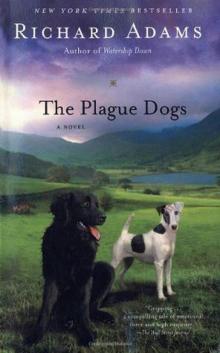 The Plague Dogs
The Plague Dogs Shardik
Shardik Traveller
Traveller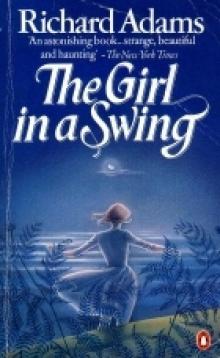 The Girl in a Swing
The Girl in a Swing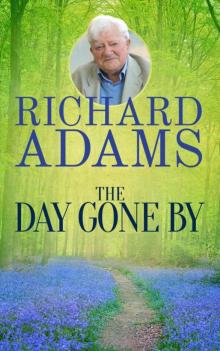 The Day Gone By
The Day Gone By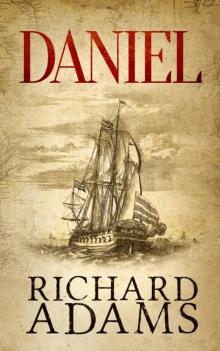 Daniel
Daniel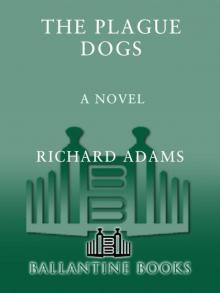 The Plague Dogs: A Novel
The Plague Dogs: A Novel